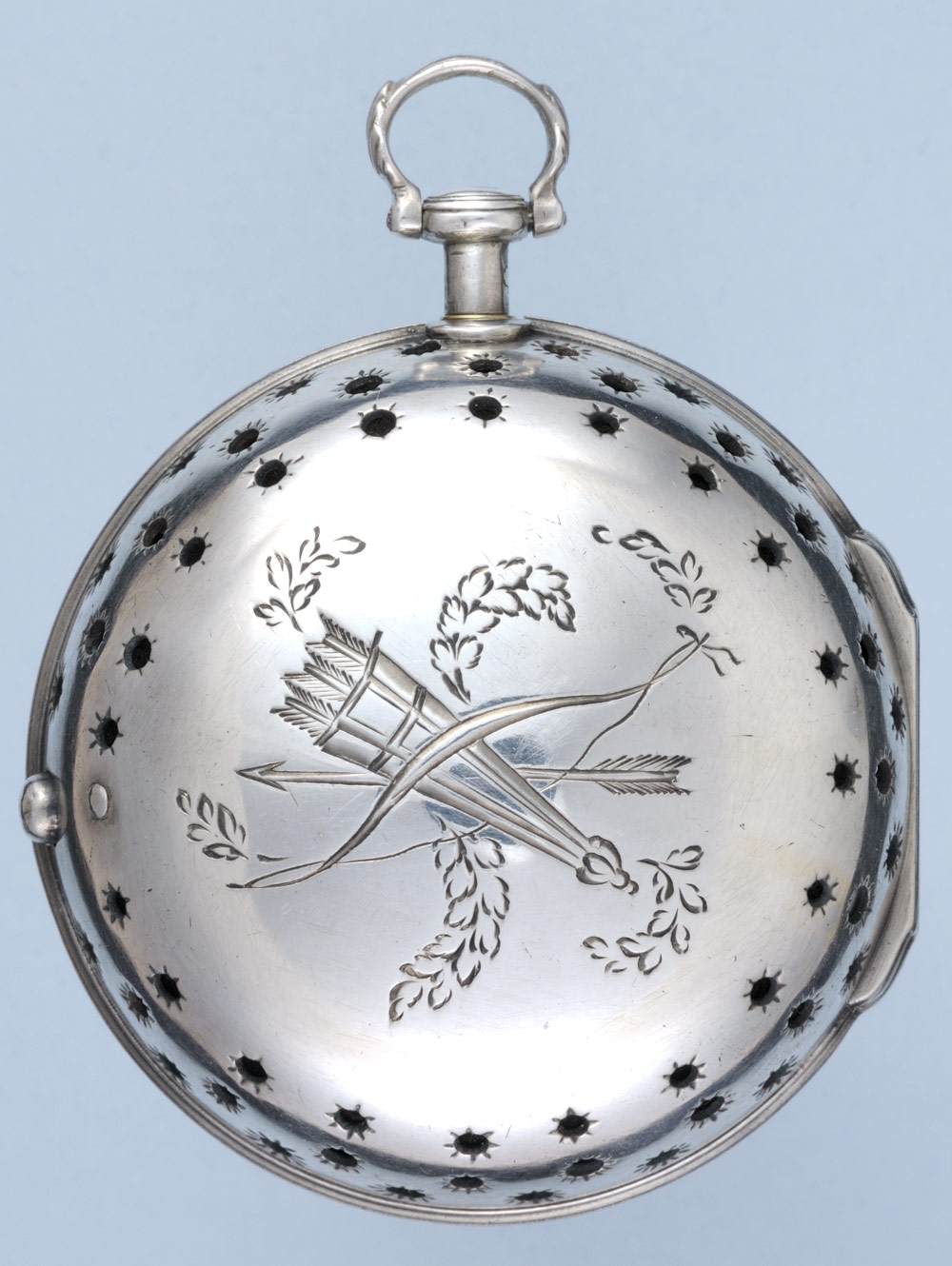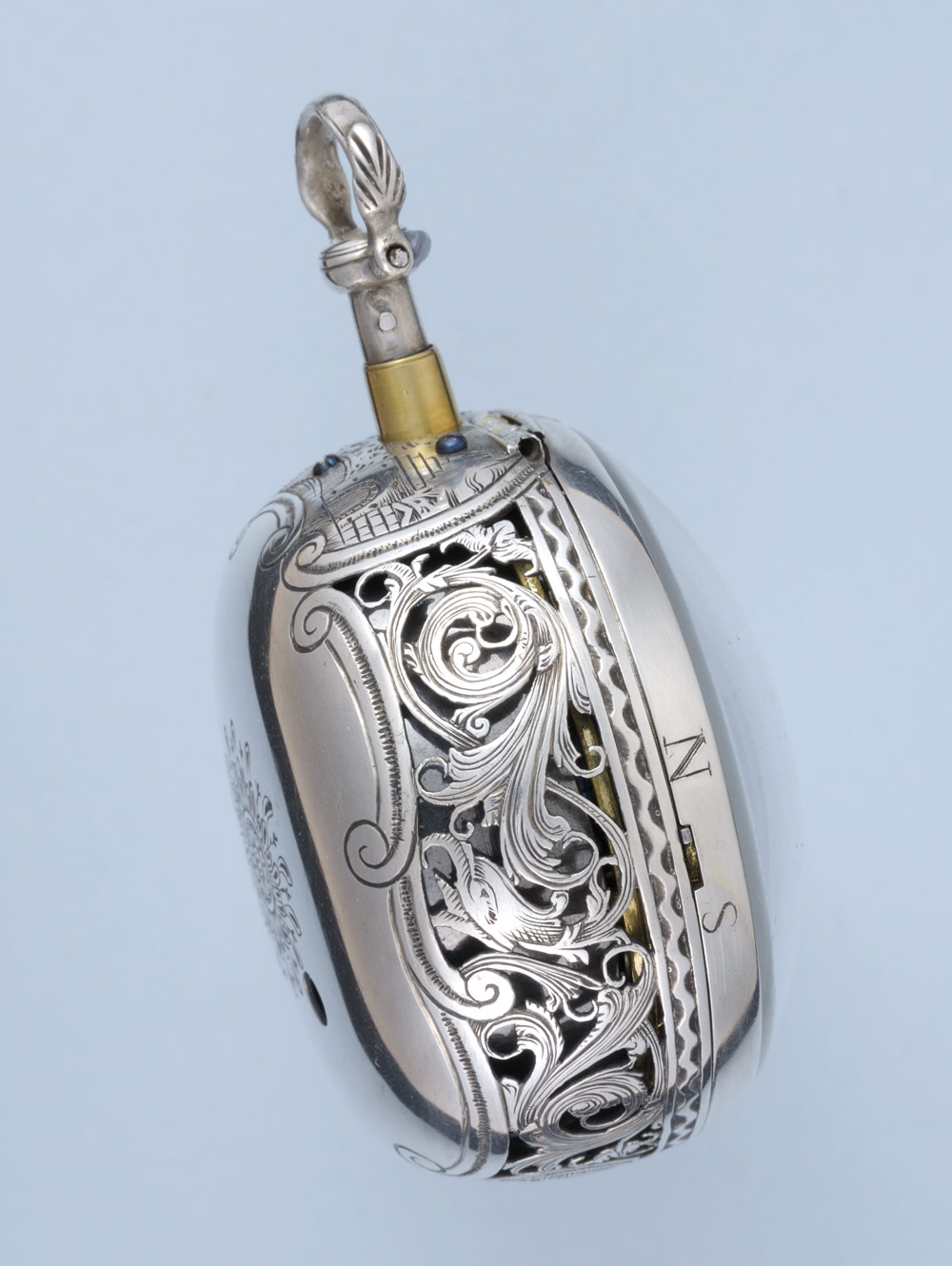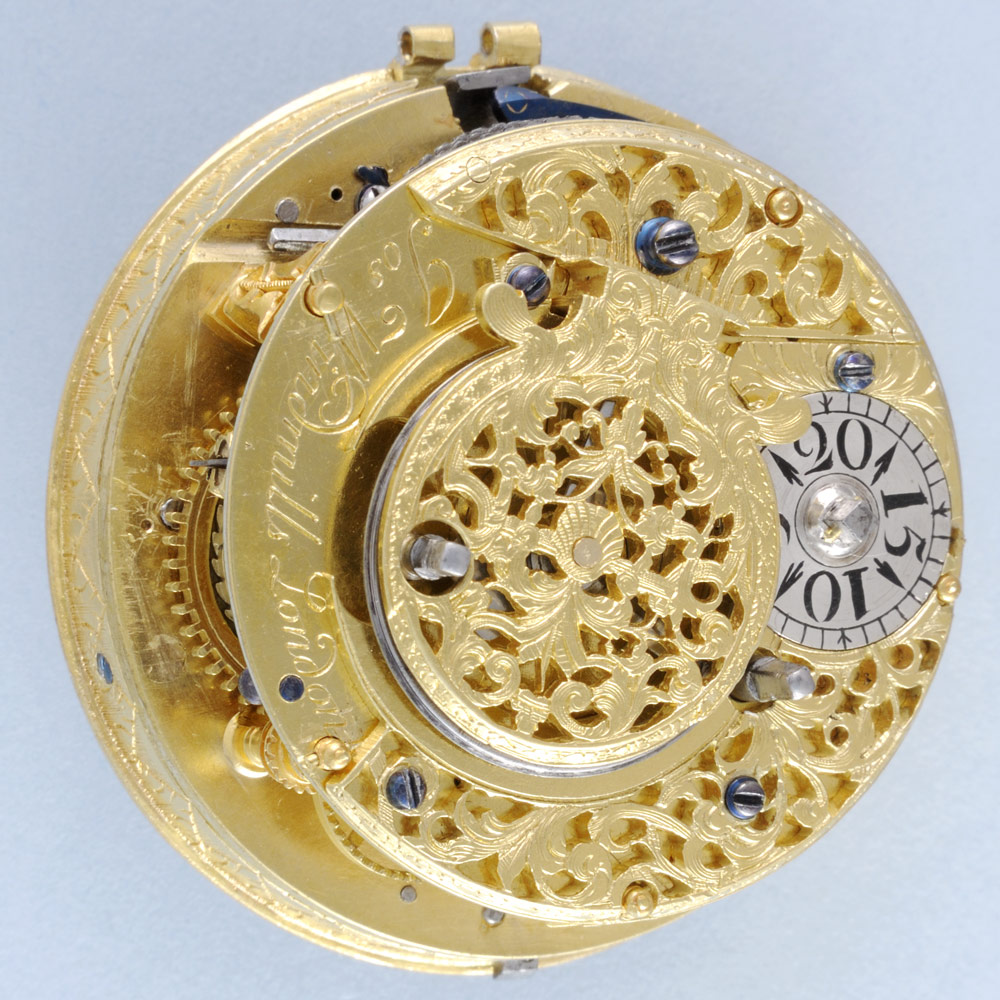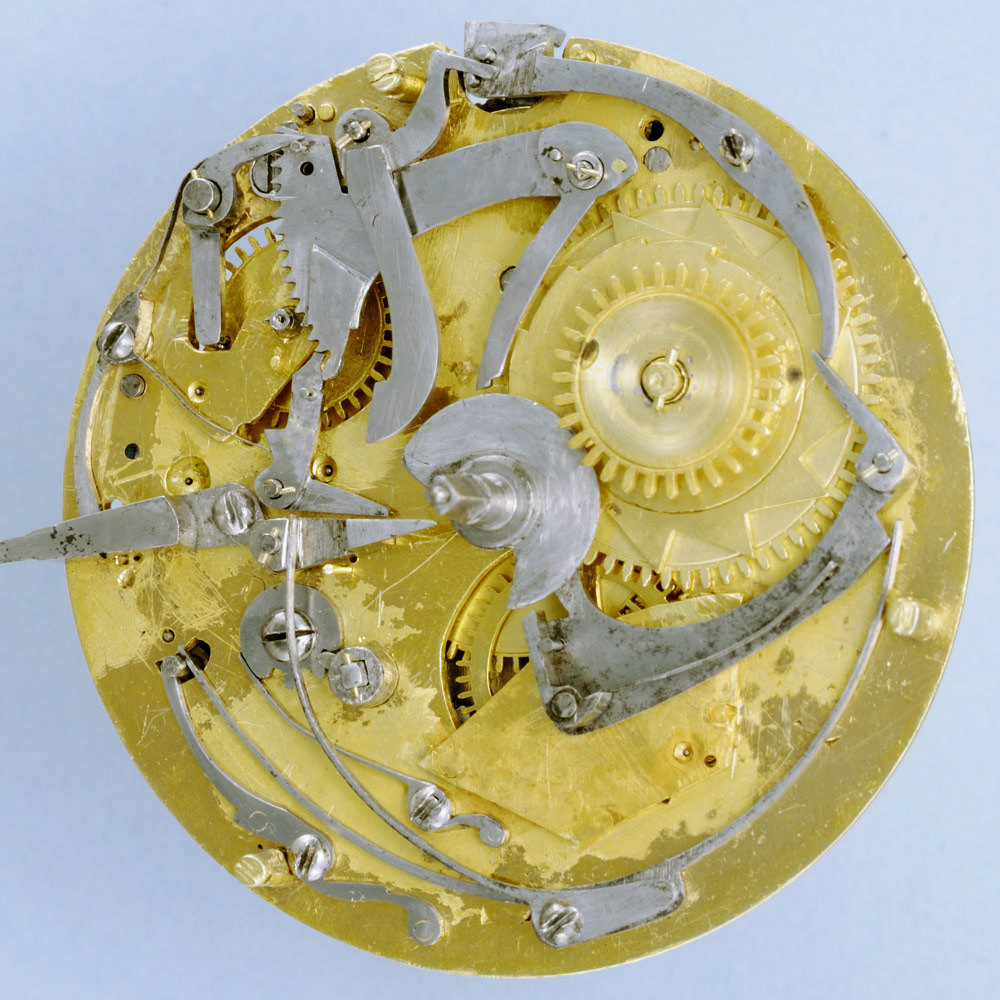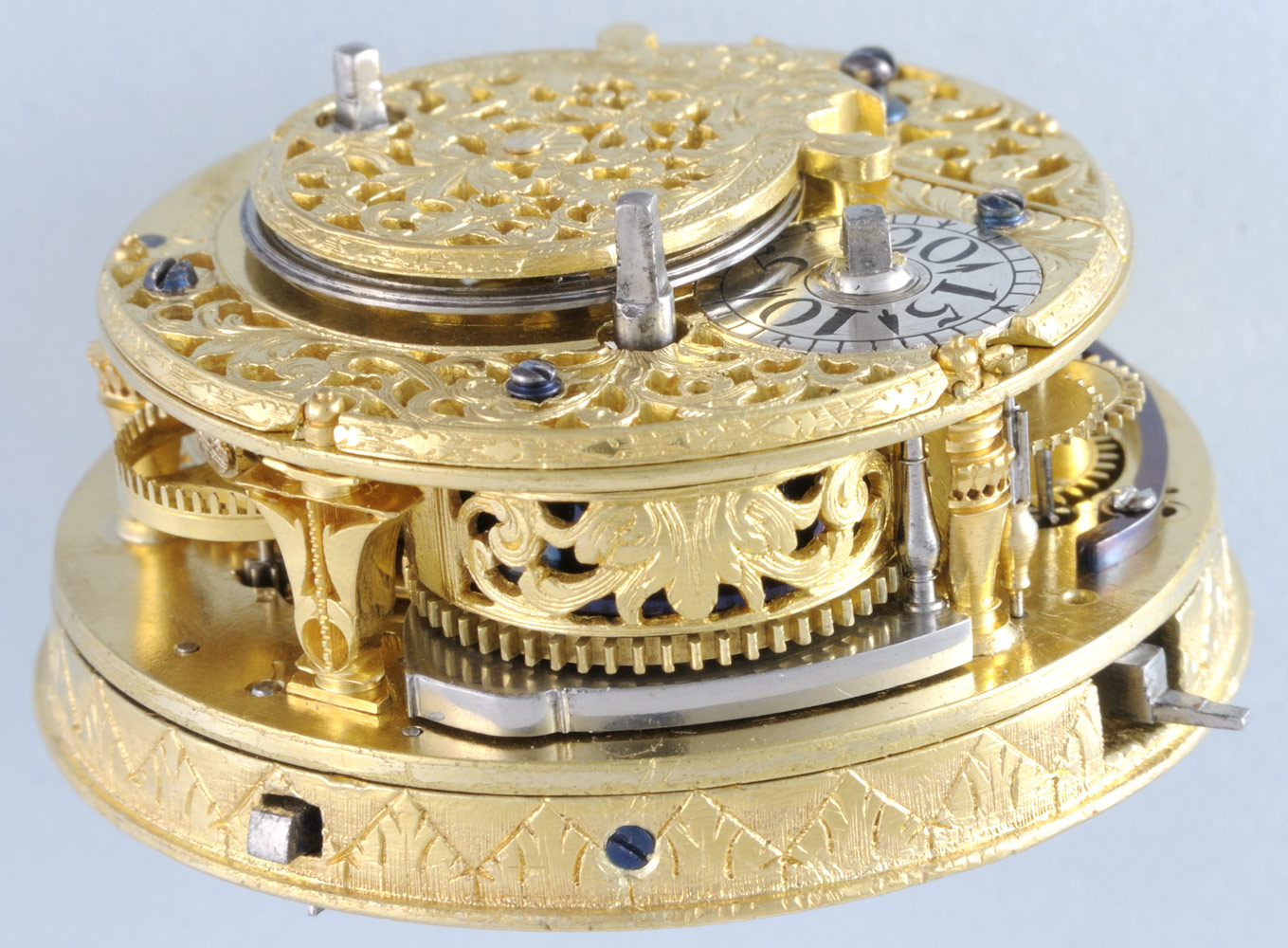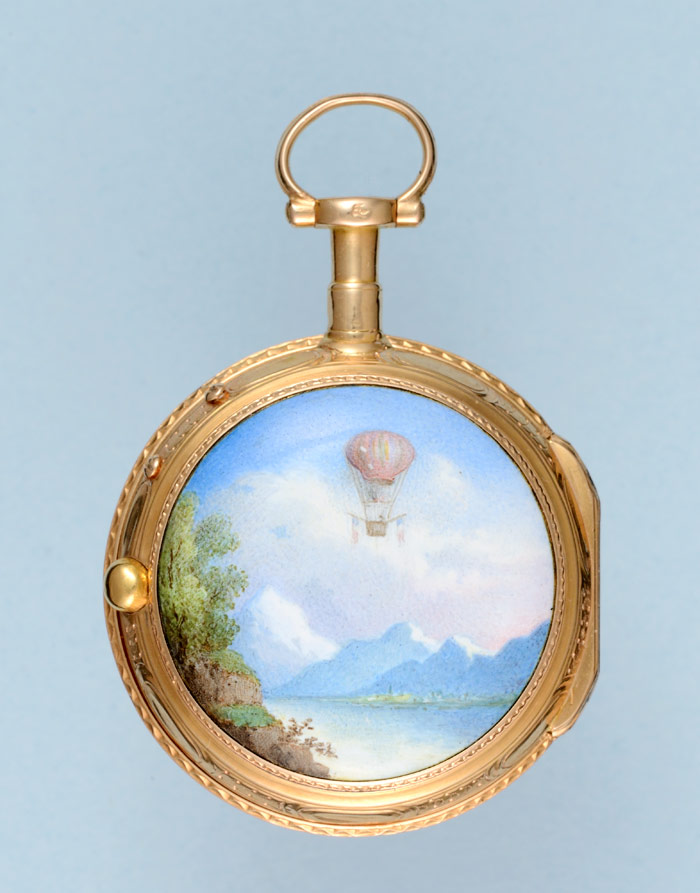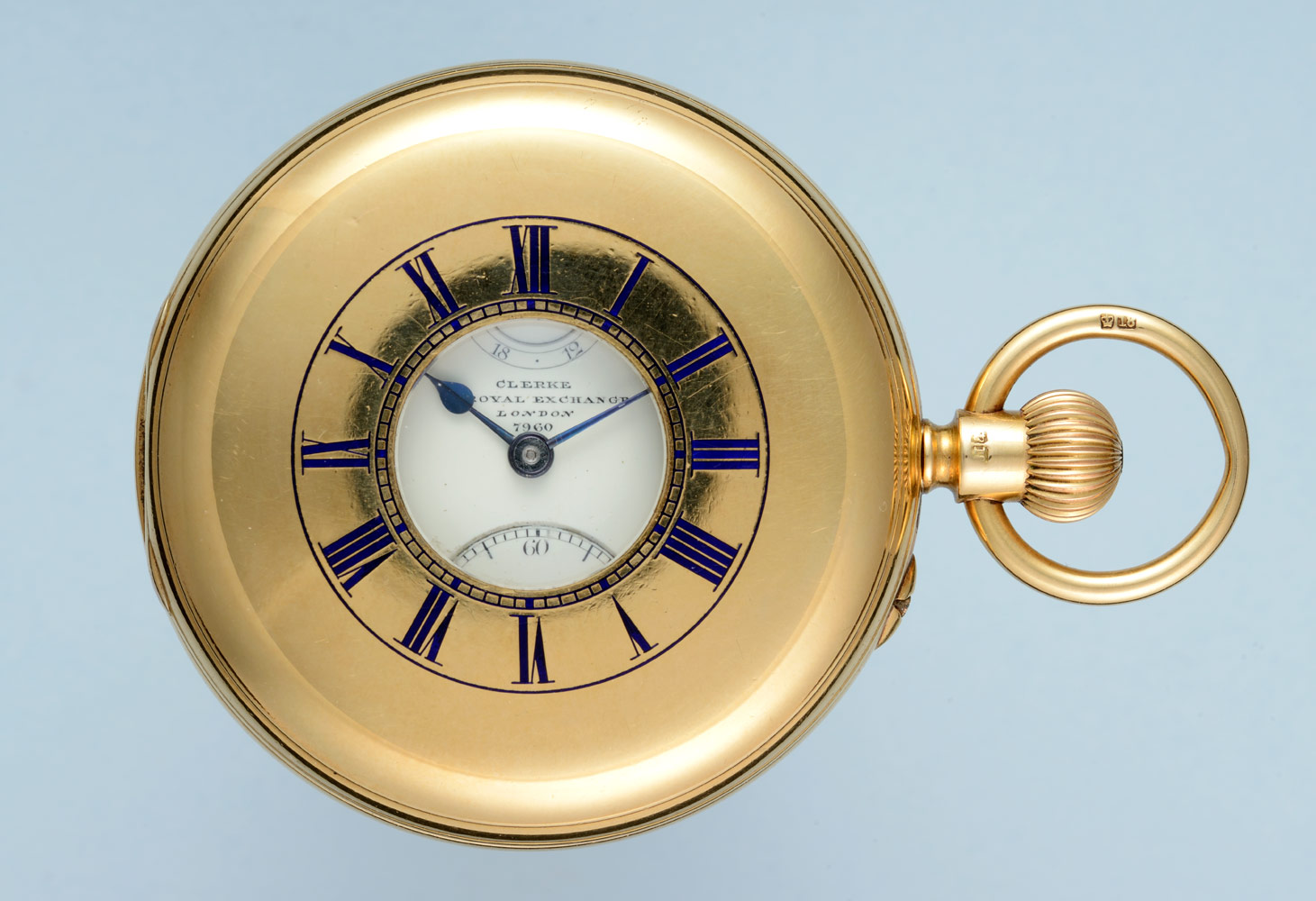Description
A rare late 17th Century rack striking and repeating verge by Windmills in silvered pair cases. Deep full plate fire gilt movement with two tulip pillars and three decorative turned pillars. Fusee and chain with worm and wheel barrel setup between the plates. Pierced and engraved winged cock with pierced and engraved foot, the winding square in an aperture in the table. Turned steel balance, silver regulator disc. Pierced and engraved resting barrel for the strike, some of the train with five leaf pinions. Push pendant and hour repeating and striking on a bell in the case. Signed silver champleve dial with Roman and Arabic numerals, fine blue steel beetle and poker hands. Pierced and engraved silvered inner case, split bezel, push pendant to release the strike train. Strike silent lever in the bezel. Purpose made silvered outer case simply pierced with a series of holes and engraved on the back with a bow and quiver of arrows.
An early example of rack striking with a very rare use of a mechanism which ensures the correct hour is stuck when the repeat pendant is used. Similar to the device used in Stogden repeaters the snail is moved backwards if it is approaching the hour. This ensures the correct hour is struck accurately. It seems Windmills wished to keep this secret by only allowing access to the under dial work to someone who knew how to remove the dial. The deep dial plate is slid onto three pegs fixed to the front plate of the movement. These were originally secured by pins under the dial which could only be removed by releasing the dial which was fixed by four bayonet feet. This necessitated unscrewing the case latch pin before rotating the dial to be able to lift it. At some time a watchmaker has sympathetically altered the watch by removing the bayonet feet and replacing them with conventional one and fixed the dial plate with three small blue steel screws. Joseph Windmills, free of the Clockmakers Company 1671, Master 1702 – 1723. Entered into partnership with his son in 1700 after which the signature used was changed





